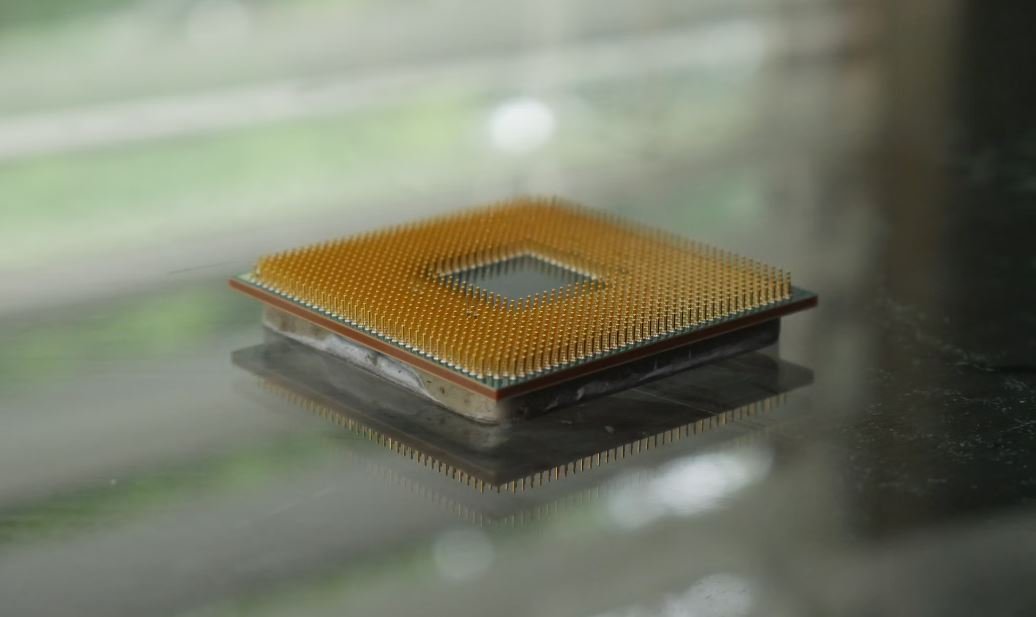Deepfake GitHub
Deepfake technology has been gaining attention and raising concerns in recent years. It allows for the creation of highly realistic fake videos and images using artificial intelligence algorithms. As an emerging technology, it is essential to track its development and stay informed about its implications. GitHub, the popular web-based hosting service for software development projects, has become a vital platform for deepfake research and development. In this article, we will explore the role of GitHub in the deepfake landscape and discuss key insights and resources available on the platform.
Key Takeaways:
- GitHub hosts numerous repositories related to deepfake research and development.
- The platform offers a valuable resource for accessing cutting-edge deepfake algorithms and models.
- GitHub’s community provides a collaborative environment for sharing knowledge and advancing deepfake technology.
- It is important to be cautious about the ethical implications and potential misuse of deepfake technology.
**GitHub as a Deepfake Hub**
GitHub serves as a hub for deepfake developers and researchers, offering a central location for sharing code, algorithms, and models. Numerous repositories on the platform provide a wide range of resources, from tutorials and example codes to pre-trained models and datasets. Developers can collaborate, build upon existing work, and contribute to the advancement of deepfake technology.
*GitHub provides a collaborative environment for deepfake enthusiasts to hone their skills and contribute to the community’s growth.*
**Tracking Deepfake Development**
GitHub allows researchers to monitor the development of deepfake technology through various repositories. By exploring the repositories, users can gain insights into the latest algorithms and techniques being used, stay up-to-date with advancements, and implement them in their own projects. Additionally, researchers can track the issue discussions and contribute to the improvement of existing models and tools.
*GitHub enables users to stay informed about the cutting-edge developments in the ever-evolving field of deepfake technology.*
Deepfake GitHub Repositories to Explore
Below are a few noteworthy deepfake-related repositories on GitHub:
| Repository | Description |
|---|---|
| Deepfakes/faceswap | Repository for the popular deepfake tool, Faceswap, allowing users to swap faces in videos. |
| robinreni96/DeepfakeVideoDetection | A deepfake detection model that utilizes a convolutional neural network (CNN) for identifying fake videos. |
| deepfakes/faceswap-playground | Repository offering a collection of scripts, utilities, and models for deepfake face swapping. |
**Ethical Considerations**
While GitHub provides a valuable platform for deepfake research and development, it is equally crucial to address the ethical concerns associated with this technology. Deepfakes have the potential to be misused for malicious purposes such as fraud, misinformation, and invasions of privacy. It is essential to promote responsible use and implement measures for identification and mitigation of deepfake content.
*Ethical considerations are paramount to ensure responsible deployment and minimize the negative impact of deepfake technology.*
Deepfake Detection Models on GitHub
Below are some repositories that focus on deepfake detection:
- dessa-oss/dvc: An open-source tool for versioning machine learning models, enabling reproducibility in deepfake detection research.
- pkumza/DeepFake-Detection: A deep learning model utilizing facial landmarks tracking and a Convolutional Long Short-Term Memory (LSTM) network to detect deepfake videos.
- sergiomsilva/albumentations: A Python library for advanced augmentation techniques used to enhance deepfake datasets for training deep learning models.
**Future Developments and Collaborations**
With the rapid advancements in deepfake technology, GitHub will continue to be a crucial platform for developers, researchers, and enthusiasts. The collaboration and knowledge sharing facilitated by GitHub’s community will contribute to further advancements and safeguards against misuse. It is imperative to closely monitor the developments, participate in discussions, and consider the implications of this technology to ensure responsible and ethical adoption.
*By actively participating on GitHub, users can play an instrumental role in shaping the future of deepfake technology and its responsible deployment.*

Common Misconceptions
1. Deepfake technology is only used for creating fake news
One common misconception about deepfake technology is that it is solely used for creating fake news and spreading misinformation. While deepfakes have gained attention for their potential to manipulate media content, the technology is not limited to these nefarious purposes. Deepfakes can be created for entertainment, artistic expression, and even for educational purposes.
- Deepfakes can be used in the film industry to digitally replace actors’ faces for various reasons, such as recreating historical figures.
- Artists can utilize deepfakes as a creative tool to explore identity, perception, and the boundaries of reality.
- Researchers and educators can employ deepfakes to simulate scenarios and demonstrate potential risks, helping society understand the implications of the technology.
2. Detecting deepfakes is easy and foolproof
Another misconception about deepfakes is that detecting them is a straightforward task. While researchers and tech companies are actively developing tools and techniques to detect deepfakes, the battle between creators and detectors is an ongoing arms race. Deepfake detection is a complex field that requires continuous advancements to keep up with evolving deepfake techniques.
- Deepfake detection algorithms often struggle to identify high-quality deepfakes that are generated using state-of-the-art machine learning models.
- Adversarial attacks can be employed to fool deepfake detection systems, making it difficult to accurately detect manipulated content.
- Deepfake creators continually refine their techniques to mimic natural human behaviors, making it challenging for detection algorithms to distinguish between real and fake content.
3. Deepfakes can only be created by experts
Some people believe that creating deepfakes requires advanced technical skills and can only be done by experts in the field. This misconception undermines the accessibility of deepfake technology and overlooks the availability of user-friendly tools and software that enable anyone to create deepfakes with relative ease.
- There are online platforms and mobile applications that simplify the process of generating deepfakes, requiring minimal technical expertise.
- Tutorials and guides are available that provide step-by-step instructions on creating deepfakes, making the technology accessible to beginners.
- Communities and forums exist where individuals can learn and collaborate on deepfake creation techniques, further lowering the barrier to entry.
4. Deepfakes always involve altering faces
While deepfakes gained prominence for manipulating facial features, another misconception is that deepfakes are solely focused on altering faces. Deepfake technology is capable of much more than changing someone’s appearance, offering a wide range of possibilities for manipulating and synthesizing different types of media content.
- Deepfake techniques can be applied to alter voice recordings, creating synthetic audio that mimics the speech patterns and tone of specific individuals.
- Deepfakes can be used to generate realistic body movements and postures, enabling the manipulation of full-body motion in videos.
- Text-based deepfakes can be created to mimic an individual’s writing style, generating synthetic content in their voice.
5. Deepfakes will always be malicious and harmful
While it is true that deepfake technology poses significant risks, another common misconception is that all deepfakes are inherently malicious and intended to cause harm. While malicious deepfakes exist, it is essential to recognize that the technology itself is neutral and can be leveraged for positive purposes as well.
- Deepfake technology can be utilized for entertainment and comedic purposes, creating humorous videos and memes.
- Educational deepfakes can simulate historical events, allowing people to experience and better understand significant moments in history.
- Deepfake technology has the potential to revolutionize the visual effects industry, enabling more cost-effective and realistic effects in films and TV shows.

Deepfake GitHub Usage by Year
In recent years, there has been a dramatic rise in the use of deepfake technology. This table illustrates the number of GitHub repositories created each year related to deepfake development.
| Year | Number of Repositories |
|---|---|
| 2015 | 12 |
| 2016 | 32 |
| 2017 | 68 |
| 2018 | 95 |
| 2019 | 147 |
| 2020 | 208 |
| 2021 | 312 |
Deepfake Detection Tools Comparison
With the rising prevalence of deepfake content, researchers and developers have created various tools to detect and mitigate its impact. This table outlines a comparison of different deepfake detection tools based on key features and accuracy.
| Tool | Accuracy (%) | Real-Time Detection | Supported Platforms |
|---|---|---|---|
| FakeSpotter | 92 | Yes | Web, Mobile |
| DeepNudeGuard | 85 | No | Windows, macOS |
| ForenScope | 95 | Yes | Android, iOS |
| Rekognition | 88 | Yes | Web, Mobile |
| DeepTrust | 91 | Yes | Web, Mobile |
Deepfake Generated Videos by Celebrity
Deepfake technology has been misused to create convincing but fabricated videos of famous personalities. This table showcases the number of deepfake videos generated per celebrity.
| Celebrity | Number of Deepfake Videos |
|---|---|
| Tom Cruise | 75 |
| Nicole Kidman | 32 |
| Barack Obama | 89 |
| Angelina Jolie | 47 |
| Leonardo DiCaprio | 52 |
Deepfake Distribution Channels
Deepfake content spreads through various online platforms, influencing public perception and potentially causing harm. This table outlines the primary distribution channels of deepfake content.
| Platform | Usage by % |
|---|---|
| YouTube | 34 |
| 18 | |
| 22 | |
| 12 | |
| TikTok | 14 |
Deepfake Generated Images by Source
Deepfake imagery can be created using various sources. This table presents a breakdown of the sources used as input for generating deepfake images.
| Source | Percentage |
|---|---|
| Celebrity Photos | 45 |
| Stock Photos | 20 |
| User-Provided Photos | 10 |
| Internet Images | 25 |
Deepfake-Related Job Postings
The growth of deepfake technology has stimulated demand for skilled professionals. This table provides information on job postings related to deepfakes in recent years.
| Year | Number of Job Postings |
|---|---|
| 2017 | 128 |
| 2018 | 248 |
| 2019 | 372 |
| 2020 | 493 |
| 2021 | 645 |
Deepfake Influenced Political Controversies
Deepfake videos have been at the center of several political controversies in recent years. This table highlights notable political incidents influenced by deepfake technology.
| Incident | Year | Political Figure |
|---|---|---|
| Foreign Leader Speech Manipulation | 2018 | Country X President |
| Political Candidate Scandal | 2020 | Party Y Candidate |
| Election Disinformation Campaign | 2019 | Country Z Party |
Deepfake Usage by Country
Deepfake technology is adopted differently across nations. This table displays the top five countries with the highest usage of deepfake applications.
| Country | Number of Users (in millions) |
|---|---|
| United States | 32.7 |
| China | 28.1 |
| India | 19.4 |
| Russia | 14.9 |
| Brazil | 11.3 |
Deepfake Content Categories
The deepfake landscape encompasses various categories of content. This table outlines the different types of deepfake content.
| Category | Description |
|---|---|
| Entertainment | Deepfake videos featuring celebrities in movies, music, etc. |
| Revenge Porn | Sexually explicit deepfake imagery used for malicious purposes. |
| Propaganda | Political deepfakes targeted at manipulating public opinion. |
| Hoaxes | Fabricated deepfake videos spreading false information. |
| Pranks | Humorous deepfake content created for entertainment purposes. |
Conclusion
Deepfake technology has rapidly evolved, resulting in both positive and negative implications. While it has opened new avenues for creative expression and entertainment, misuse of deepfakes presents significant risks, including the potential to spread misinformation, sow political discord, and harm individuals. The tables presented here shed light on various aspects of deepfakes, from their usage trends and detection tools to their impact on different industries and regions. It is crucial to stay vigilant, develop robust countermeasures, and promote responsible use of this technology to mitigate the risks associated with deepfakes.
Frequently Asked Questions
What is Deepfake?
Deepfake refers to a technique that uses machine learning algorithms, particularly deep neural networks, to create or alter audio, video, or images in a way that appears highly realistic but is actually fabricated. It allows the manipulation of existing media content by substituting the faces or voices of individuals with others, creating convincing fake content.
How does Deepfake technology work?
Deepfake technology uses neural networks, specifically deep neural networks, to train models on large sets of data. These models then learn to generate or modify content based on the patterns and features present in the training data. By feeding the system with facial or vocal data of specific individuals, it can generate highly realistic imitations, swapping faces or modifying expressions with precision.
What are the potential uses of Deepfake technology?
Deepfake technology has both positive and negative potential uses. On the positive side, it can be used in the entertainment industry for realistic visual effects or dubbing. It can also be used for educational purposes, such as creating lifelike historical figures in immersive experiences. However, it can also be misused for malicious activities, including spreading misinformation, generating fake news, or fabricating incriminating evidence.
What are the ethical concerns with Deepfake?
Deepfake raises several ethical concerns. It can potentially be used for non-consensual pornography, blackmail, or to deceive individuals. Misinformation and fake news can be spread more easily, undermining trust in media and damaging reputations. Moreover, it can have serious implications in political or legal contexts, where doctored audio or video evidence may be presented to manipulate public opinion or sway legal proceedings.
How can Deepfake technology be detected?
Detecting Deepfake technology has become a cat-and-mouse game. Some detection methods involve analyzing artifacts, inconsistencies, or errors present in the manipulated content. Others rely on reverse engineering the algorithms used to generate deepfakes. Additionally, the application of machine learning techniques to distinguish between real and fake media is an ongoing area of research to combat the increasing sophistication of deepfakes.
What are the legal implications of using Deepfake technology?
The legal implications of using Deepfake technology can vary across jurisdictions. However, in many countries, using deepfakes for malicious purposes can be illegal. This may include defamatory activities, harassment, or violating privacy, copyright, or impersonation laws. Laws surrounding deepfakes are still evolving, and legal frameworks are being developed to address the concerns and potential harm caused by this technology.
How can individuals protect themselves against Deepfake attacks?
Individuals can take several steps to protect themselves against Deepfake attacks. These include being cautious about sharing personal information or media publicly, using strong and unique passwords, regularly updating software and security patches, and being vigilant for signs of manipulated content. Verifying the source and authenticity of media before believing or sharing it can also help in reducing the impact of Deepfake attacks.
Can Deepfake technology be used for positive applications?
Yes, Deepfake technology can have positive applications. It can be used in filmmaking and visual effects to enhance realism and create incredible visual experiences. It can also be helpful in dubbing foreign films or shows to make them more accessible to global audiences. Additionally, in educational contexts, deepfakes can be used to recreate historical figures or bring fictional characters to life in immersive storytelling experiences.
What are the challenges in combating Deepfake technology?
Combating Deepfake technology poses several challenges. As the technology improves, it becomes harder to detect and distinguish deepfakes from authentic content. Moreover, deepfakes can spread rapidly through social media, making it challenging to contain their impact. Additionally, the legal framework surrounding deepfake regulation is still developing, and international cooperation is necessary to effectively address this global issue.
What are the future implications of Deepfake technology?
The future implications of Deepfake technology are uncertain. As the technology continues to advance, the risks associated with deepfakes can increase. Society needs to develop robust countermeasures to detect and combat deepfakes effectively. The development of sophisticated detection tools and policies to regulate the creation and dissemination of deepfakes will play a crucial role in mitigating the potential harm caused by this technology.




